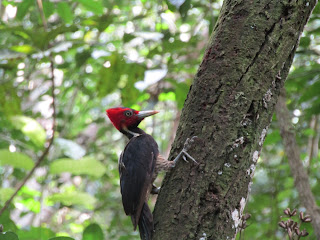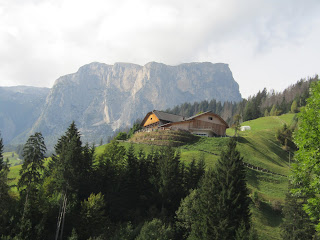If you have read any of my posts, you will know that long travel days are not my idea of fun. I think most people feel the same way. I would prefer to lay down and close my eyes, rather than travel for 30+ hours. There is also a curious outcome to changing 12 time zones in a single long day. Your brain becomes mush and making delicate, esoteric decisions can be problematic. I am turning 67 soon (more than two thirds of a century) and wonder at times if my cerebral functions are diminishing.
We flew from Toronto (YYZ) to Tokyo (NRT), sat around for an hour, then flew to Bangkok (BKK). If I leave everything in Ontario time (EST), our travel day looked like this: Wake up at 05:30 Monday, Uber to Go train at 06:40, take the Go train at 07:10 to Union Station (Toronto), UP train from Union Station to Pearson Airport (hence the acronym UP), board a flight to Tokyo at 12:35, land in Tokyo at 02:30 Tuesday morning, board flight to Bangkok at 03:30, arrive Bangkok at 10:30, clear customs, take a train to the Phaya Tai train station, then a taxi to our street. Notice I did not say "our hotel". Khaosan Road was holding a massive party replete with the loudest electronic music I have ever heard! This occured on both nights we stayed in Bangkok and I would guess it happens every night. Our hotel was about a kilometer from where we were dropped off. It was about 13:00 Tuesday afternoon EST before we found our hotel. Although Thailand is an interesting country, this is most likely the last time we visit.
 |
| Bhudda at the Golden Mountain |
During our 2 days in Bangkok, we visited the Golden Mountain. Think stairs, and if you are jet lagged, even more stairs. It was interesting, but since I cannot separate the dreams from reality, let's move on. Next, we took a boat tour of the rivers and canals. The boats are smallish, but boast wacked out 8 cylinder engines attached to a long pole (crankshaft?) with a propeller at the end. I'm guessing the design was due to a mad scientist convention years ago in Bangkok.
 |
| Colourful Boats |
Now the bad news...
I tried to determine if my advancing years was a factor in what happened next, but due to jetlag, I was too tired to figure it all out. After 2 days in Bangkok, we took a bus to Hua Hin, a beach town about 3 hours south of Bangkok. Our hotel was modern and clean, with one of the longest pools I have ever seen. We quickly realized that aside from the beach, it was difficult to access any other attractions by walking or bus. Our solution was to rent a scooter. It was not overly expensive (500 Baht per day - about $20 CAD) and allowed us to get around without the wonderful experience of heat stroke, induced by walking in 30+ degree weather. I withdrew some Baht from an ATM while Nickie was having a massage and we headed to a restaurant for lunch. Note: From now on, I will call what Nicki does "a massage" since I am hazy on the difference between massage, pedicure, manicure or a facial. They are all functions that happen in little buildings that I am not allowed to enter. At lunch, I realized I did not have my credit card. I figure that I left it at the ATM. Most likely, the machine digested my card. Once back at the hotel, I put a lock on the card and will wait until I am back in Ontario to resolve this issue.
 |
| Honda Giorno Scooter |
After touring Hua Him for a few days, I then realized I was also missing my Driver's license! Fortunately, a trip to the scooter rental shop resolved that issue. Okay, I might as well get over the third and hopefully last incident. We left Hua Hin and took a flight to Chiang Mai in northern Thailand. After boarding the plane, I realized I was missing my wallet! Missing a credit card? No big deal. Missing a driver's license while driving in a foreign country on the left side of the road? Not the best idea. But missing all of my documentation, cards and cash? Big one!
Hua Hin was hot, dusty and smoky. I wondered why our feet were black after being at the pool. We were informed that the farmers like to burn their fields at this time of year. I assume that they harvest before doing so. There was a perpetual haze while we were in Thailand. You will note it in the distance photos. Many Thai wear masks.
Since we are not overly fond of sitting on a beach (I can hear my family laughing. I have some trouble keeping still for more than 3.225 minutes at a time), Hua Hin did not have much for us to do. There was little hiking in the area, perhaps because the daily high ranges from 30 to 45 degrees. We did get out for a hike around a small lake and saw a few Wats (Buddhist temples). Thailand boasts about 3,000 temples, mostly involving Buddha. After remarking on the temple plethora, I realized the Thai would have the same thought if they saw all the churches in North America. Since we had ample spare time, we were able to hit the exercise room almost every morning. One long scooter ride led us to the Monsoon Winery, where we enjoyed lunch and some wine tasting. The Thai wine is actually quite good! Also of strange note is that the Monsoon Winery is the sponsor for Alex Albon, one of only 20 F1 drivers! I'm a big fan of Formula 1, so it came as quite the shock that I was at an F1 sponsor's business.
 |
| Monsoon Winery |
As alluded to above, we flew from Hua Hin to Chiang Mai, in northern Thailand. Upon landing, we contacted Air Asia and mentioned how I had lost my wallet, most likely at the gate in Hua Hin. Fortunately, they found my wallet and were able to send it to Chiang Mai on the next flight. Much relief!
Chiang Mai is an interesting city, with several attractions nearby. The haze was omnipresent and the streets were dusty. There are likely little in the way of rules or restriction on what is allowed on the streets and sidewalks. On one street the parked cars were 4 deep, leaving barely enough room for a car to pass. Sidewalks boasted everything from vendors to trees. At most points, it was impossible to walk on the sidewalk. We had to resort to walking on the streets, which was typically the most dangerous thing we did each day.
 |
| The White Temple |
 |
| Inside the Blue Temple |
We visited enough temples to satisfy me for the next 20 years. They are quite impressive and it is hard to describe the intricate detail in the structures. One of our excursions was to visit the white, blue and black temples. Another included the Queen and King temples, as well as a hike to the highest point in Thailand and a waterfall. One fun event was a cooking class, where we learned how to make authentic Pad Thai and Thai curry. More important, we got to eat the meal!
Another highlight was visiting the Queen Sirikit Botanical Gardens. We started with a canopy walk, with eye level views of the forest canopy. Butterflies and birds abounded. The gardens were incredible and varied. We also toured the long neck village, where the women wore metal bands that made their necks stretch. Actually, I read that it lowers their collarbones. The practice has been discontinued as it caused problems assimilating the girls into schools.
 |
| Queen Sirikit Garden |
 |
| In the rose garden |
We visited a couple of elephant sanctuaries and fed the elephants. They are majestic animals and incredible to experience up close.
 |
| Nickie and her new friend |
After Chiang Mai, we flew to Bangkok to prepare for the trip home. The flight from Bangkok to Tokyo was 6 hours, then a 5 hour layover, as the flight from Tokyo to Toronto was delayed 2 hours. We found out after landing in Toronto that the delay was due to all flights out of Toronto being cancelled the day before. The flight to Toronto was 12 hours. After customs we waited almost 2 hours for our bags. This is the second time we have waited long for a checked bag at Pearson Airport. Nickie had purchased an e-sim to use her phone in Thailand and while waiting for our bags, something went wrong when she tried to change back to her physical sim card. Problem! Our plan had been to take the UP and GO trains to Barrie, but we would then have no method of contacting Uber or a taxi. After 28 hours of travel, I did not want to walk 5K through snow to get home... Once our luggage finally arrived, we took a taxi home.
As a synopsis of our trip to Thailand, it was not for us. Many points were interesting, but not worth the extended travel. Thailand should do something about the pollution created by farmers burning their fields. As a personal note, I'm not keen on spending time in a hot, dirty and smelly city.
 |
| See the Haze in the background |
We will now take a 6 months hiatus from travelling, as we plan to move this summer. In the fall, we hope to travel to New Zealand. Yes, another trip with long travel days, but New Zealand should provide more hiking and will be better suited to our travelling desires.


















































